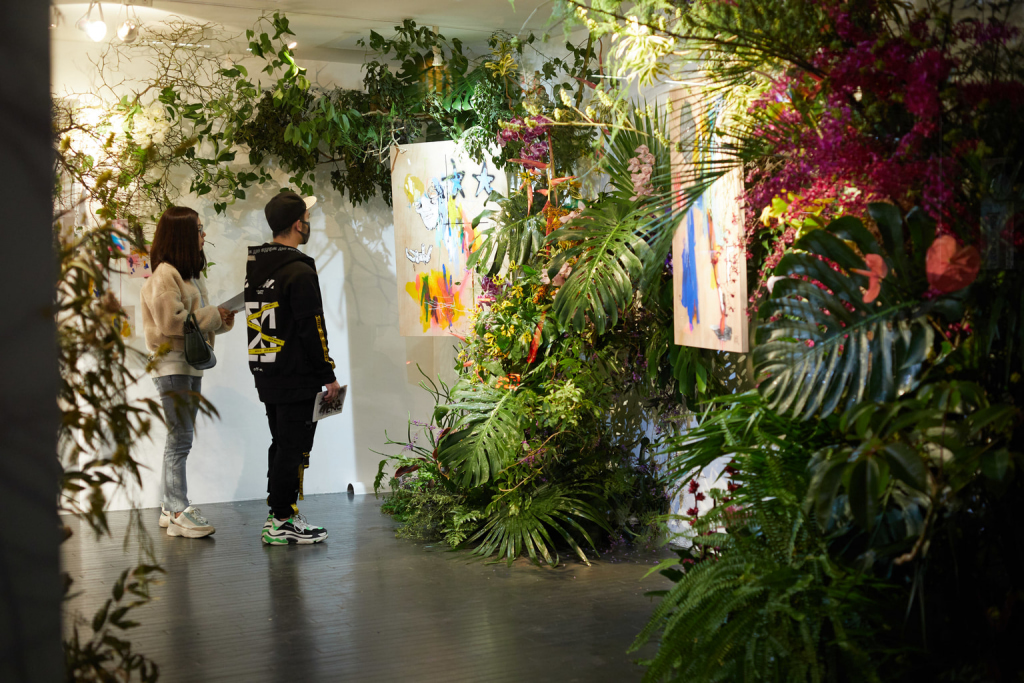When imagining a bouquet of flowers that would represent a bouncing new baby you think pastel colors – pink carnations for girls and blue irises for boys.
For Tokyo-based floral artist Akiko Suzuki, when she thinks of babies, she thinks of the sarracenia, the North American plant with the veiny funnel that traps and devours insects.
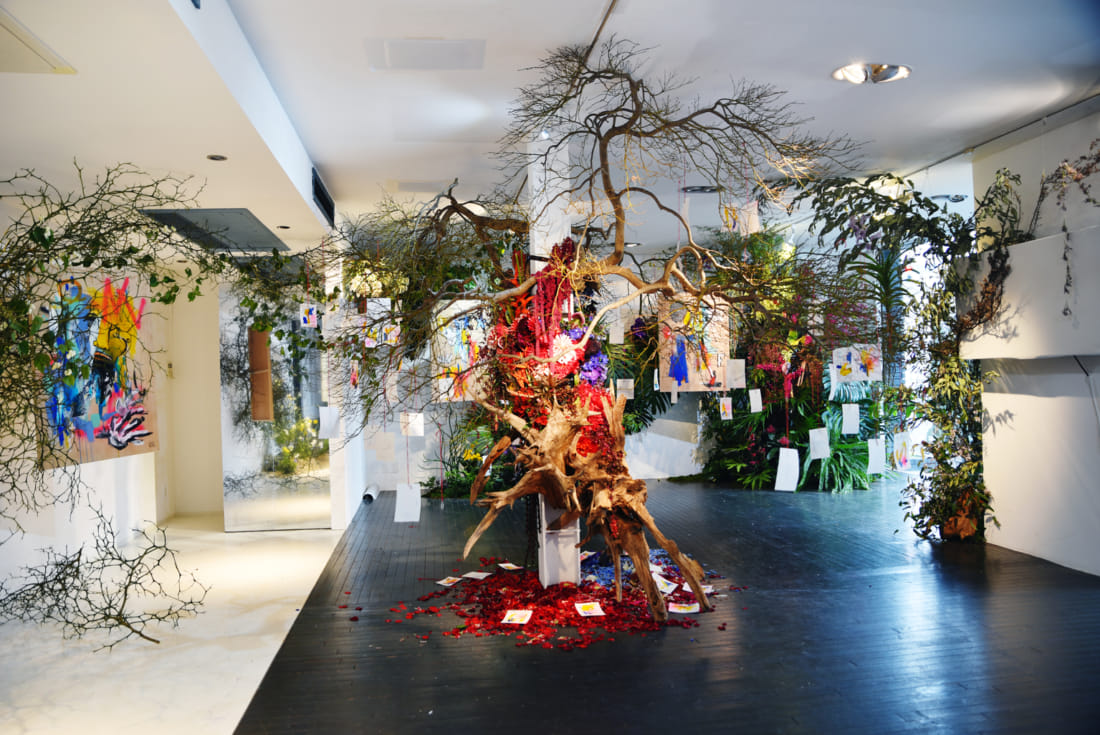
Courtesy of UltraSuperNew Gallery
Two Worlds Collided
Thus, it is the sarracenia that kicks off the journey through the Uzu exhibition at UltraSuperNew Gallery in Kita-sando. The Japanese concept of uzu is that of an endless swirl like a whirlpool or vortex. Suzuki, the proprietor of Mitsurin Tokyo floral company, collaborated with Italian artist Sante Visioni on the joint exhibition to share their vision of the cyclical nature of life, juxtaposing Eastern and Western artforms and doctrines.
It is the first art exhibition for Suzuki, who is more accustomed to providing cheerful floral arrangements for weddings and commercial events. It was while working at a wine festival that she met Visioni, the multi-talented painter whose paintings are usually created as a live performance in which he produces faces and geometric figures through violent motion and gestures.
They combined their visions with an exhibition that depicts the parallels of life cycles and celebrates the beautiful and tragic symbiosis of humankind and plants.
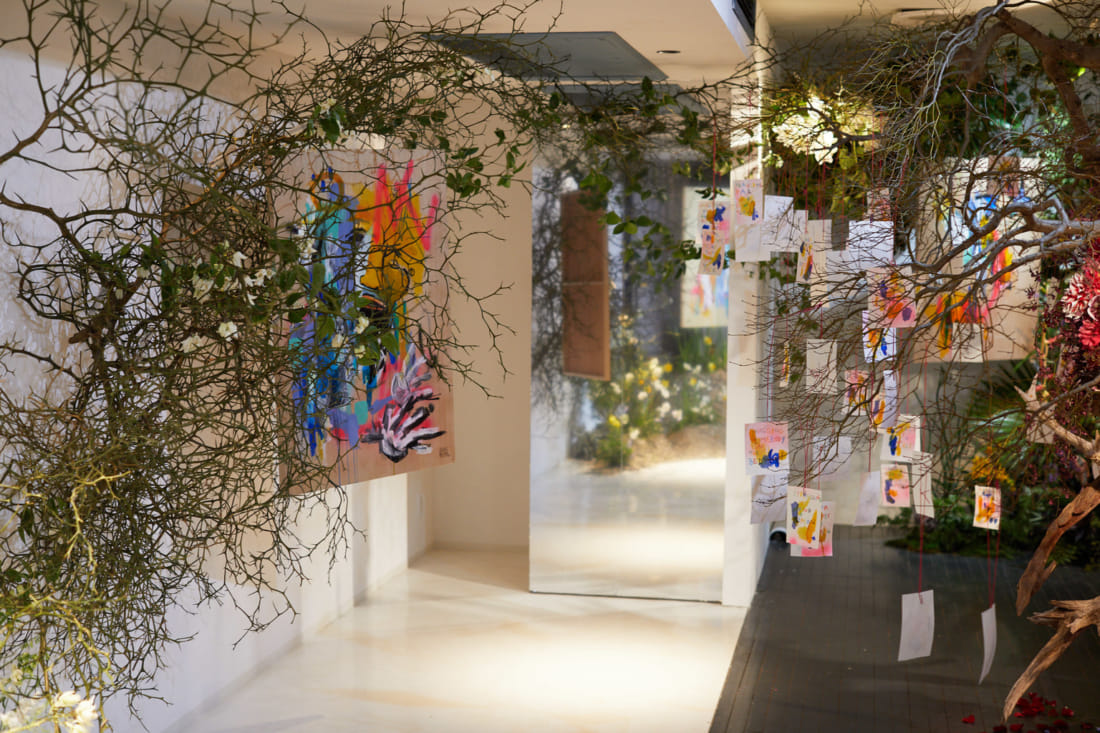
Photo by Ryuta Seki
Down the Garden Path
Visitors to the gallery are immediately washed over with the exhibit’s pungent fragrance as they step into the grotesque botanical garden. At the center of the room is the exhibit’s lifeforce, a 50-year-old Japanese maple tree Suzuki sourced from an elderly arborist in her native Kanagawa.
The trunk is wrapped with a cluster of bloodred flowers, representing the exposed human anatomy. The cragged branches are decorated with Japanese notecards, painted by Visioni, on which guests have written personal messages.
The installation revolves around the maple, with Suzuki’s flora encompassing the walls and encroaching into the pathway, while Visioni’s six acrylic and mixed media paintings on plywood are strategically placed throughout.
The path starts with the purple sarracenia. Suzuki says they represent the infant child who relies on basic instincts and reflexes for survival. The exhibition progresses, intertwining dainty flowers and shrubs before giving way to prickly adolescence, represented by the Japanese citrus plant katachi, whose vines are adorned with finger-length thorns.
Meanwhile Visioni’s accompanying chaotic black, blue and pink abstract painting captures the confusion, desires and ambitions of youth.

Sante Visioni, courtesy of UltraSuperNew Gallery
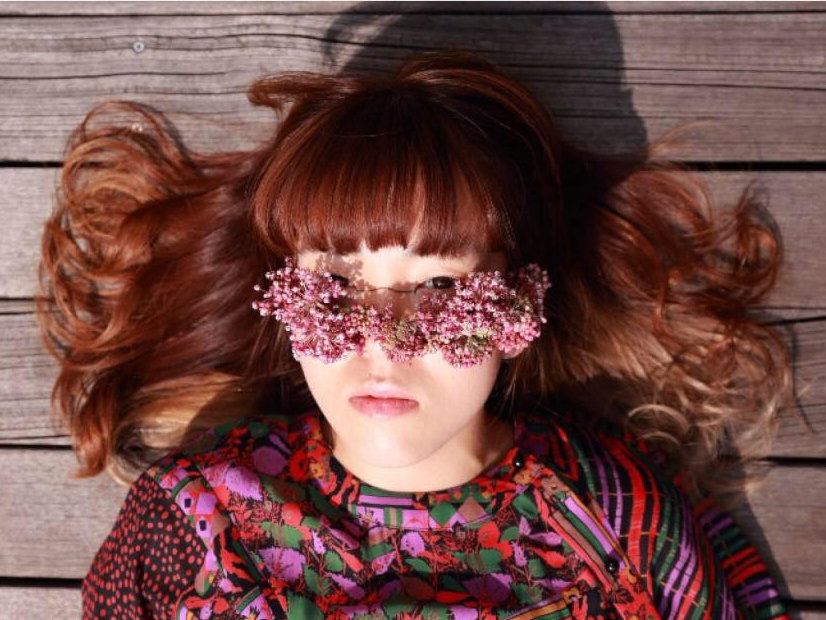
Akiko Suzuki, courtesy of UltraSuperNew Gallery
All Grown Up
Reaching the adulthood stage means reaching the climax of the exhibition. Here Suzuki chose a tropical motif, which she says best represents herself. Holding a large water bottle, she constantly sprays the plants to keep them fresh and vibrant. This section of the exhibition is a menagerie of color, the wall bursting with orchids, banana leaves and other green, glistening plants.
The faces in Visioni’s two paintings in this section are more defined – like fully formed adults. Visioni’s work lies in the area of abstract street art, with sober undertones. The fourth painting in the series, while not as severe as Francisco Goya’s painting “Saturn Devouring His Son,” shares similar form and meaning – the conflict between youth and old age, and the surrender to time as the devourer of all things.
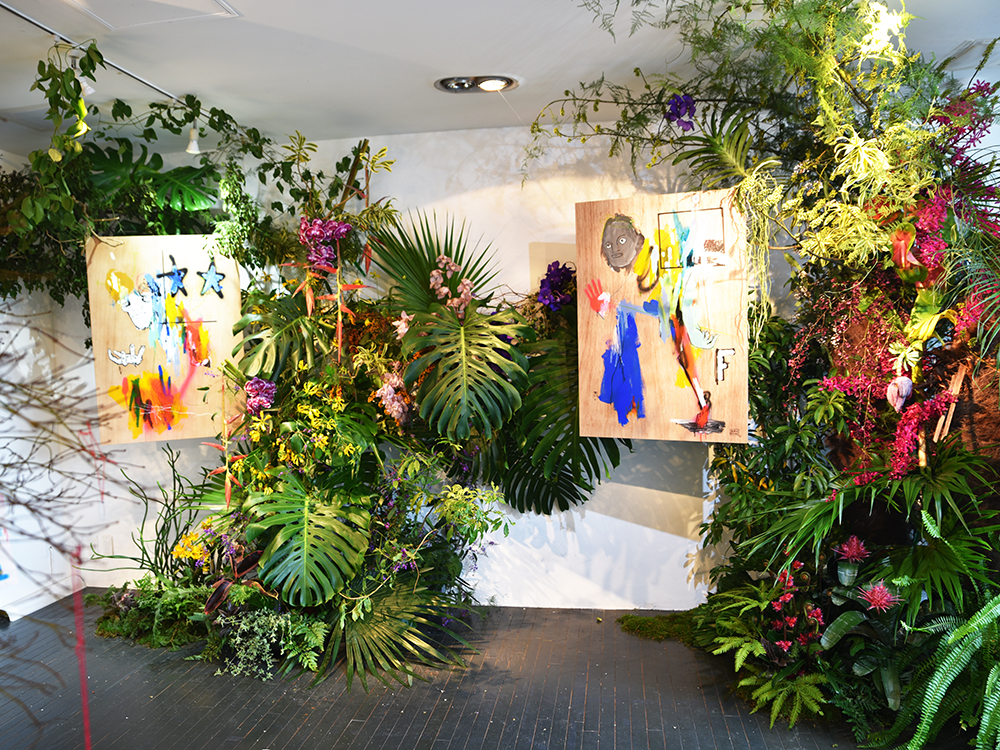
Courtesy of UltraSuperNew Gallery
Don’t Forget the Roses
As the exhibition progresses, the plants become drier, silver leaves hanging down the wall alongside white statice and other subdued plants. The final pièce de résistance is the death scene. Visioni grasps the Western fixation on the finality of death, showing the spirit leaving the body – and skull – behind. Vines of blue delphinium and white baby’s breath hang over the painting and droop to the ground.
Here Suzuki has planted a round mirror surrounded by dead and crushed flower petals. The ancient Japanese belief is that at the end of life you look in the moon and see a reflection of yourself.
A trail of dead flowers leads back to the sarracenia, the devourer of flies and other pesky bugs, and the resurrector of life’s swirling vortex.
Uzu by Sante Visioni and Mitsurin Tokyo runs through February 2, 2020 at UltraSuperNew Gallery. Find details on our Events listing.
Feature photo by Ryuta Seki

